The external resources are stored on MSD devices such as a USB mass storage device (MSD) or SD card reader.
The intent of aria_quickstart_external_resources (MSD device reader) application is to demonstrate Aria Graphics Library’s ability to support assets stored on external NVM. Another intent is to highlight possible draw performance drawbacks with these techniques and to serve as a guiding post for UI application designers on their judicious use.
Applications requiring multiple images or non-alphabet-based languages with large number of glyphs, have a very large NVM requirement for their graphics resources. In such applications, storing these graphics resources on-chip may be inefficient or impossible. The solution is to store the graphics resources to off-chip NVM, thereby preserving the on-chip NVM for program memory and allowing for more complex functional features.
The aria_quickstart_external_resources (MSD device reader) application populates some of its user interface from assets stored on on-chip NVM and other parts of it from assets stored as binary data on an external NVM. The resources are previous copied into the external NVM in the form of USB mass storage device or SD card reader.
To demonstrate how to access graphics resources stored on an external memory device, three components are needed:
• File Packaging
• USB Mass Storage Device or SD Card Reader.
• Fetch Application
The following figure shows the external resources process diagram.
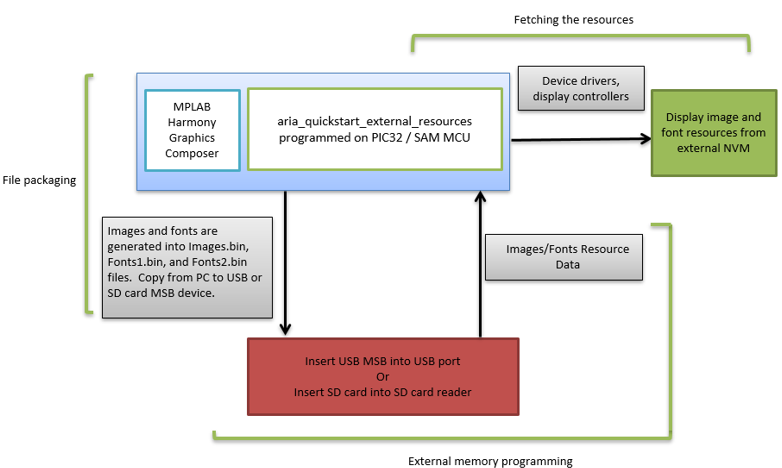
The same image, stored externally as four different encoding formats, are demonstrated: Uncompressed RAW, Run-Length Encoded (RLE), Uncompressed RAW with direct blit enabled, and JPEG compressed.
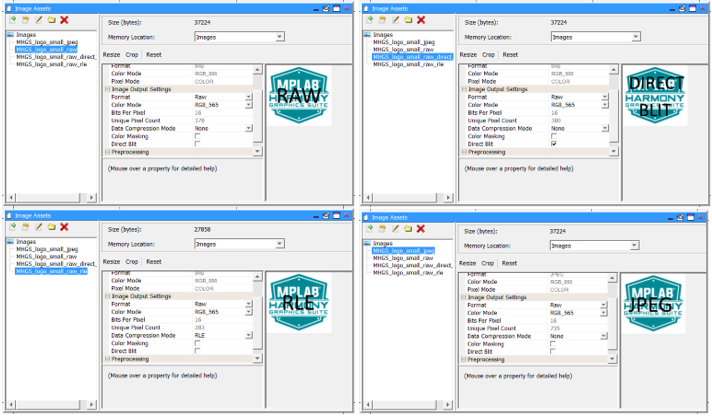
The image files are generated into an external binary data file called Images.bin. This file is to be copied onto the USB MSD or SD Card Reader.

The aria_quickstart_external_resources (MSD device reader) application also demonstrates the ability of the Aria Graphics Library to support multiple languages in the same application build. One language is alphabetic (English) and the other is non-alphabetic (Chinese). English is supported via the Basic Latin Unicode Range (ASCII 32 to 127).
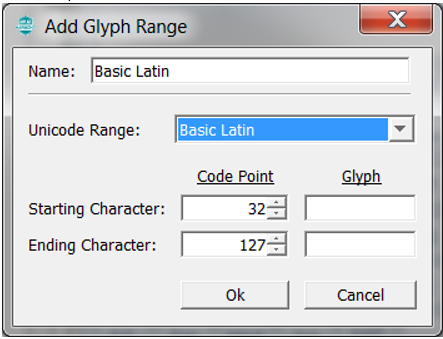
For Chinese, the MPLAB Harmony Graphics Composer’s built-in automatic glyph filter is overridden to use the enter CJK Unified Ideographs Extension 1 (UTC 13,312 to 19,903). This covers 6591 most commonly used kanji glyphs. The glyphs for both languages are generated as binary data, programmed into external NVM, retrieved and displayed from external memory at runtime.
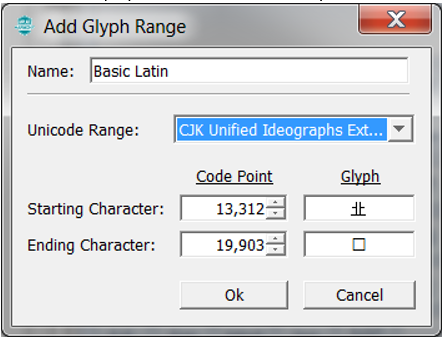
The font data is to be generated into two separate files: Fonts1.bin and Fonts2.bin. This is to demonstrate the ability for the graphics library to retrieve data for the same font for two separate binary resource repositories.
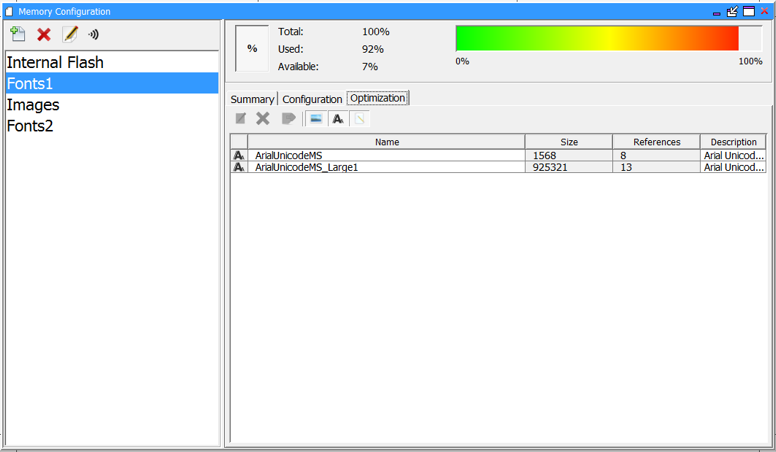
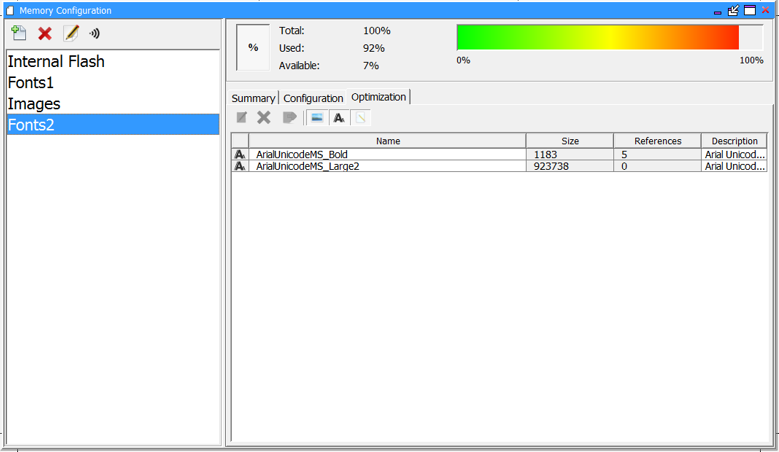
|
MPLAB® Harmony Graphics Suite
|